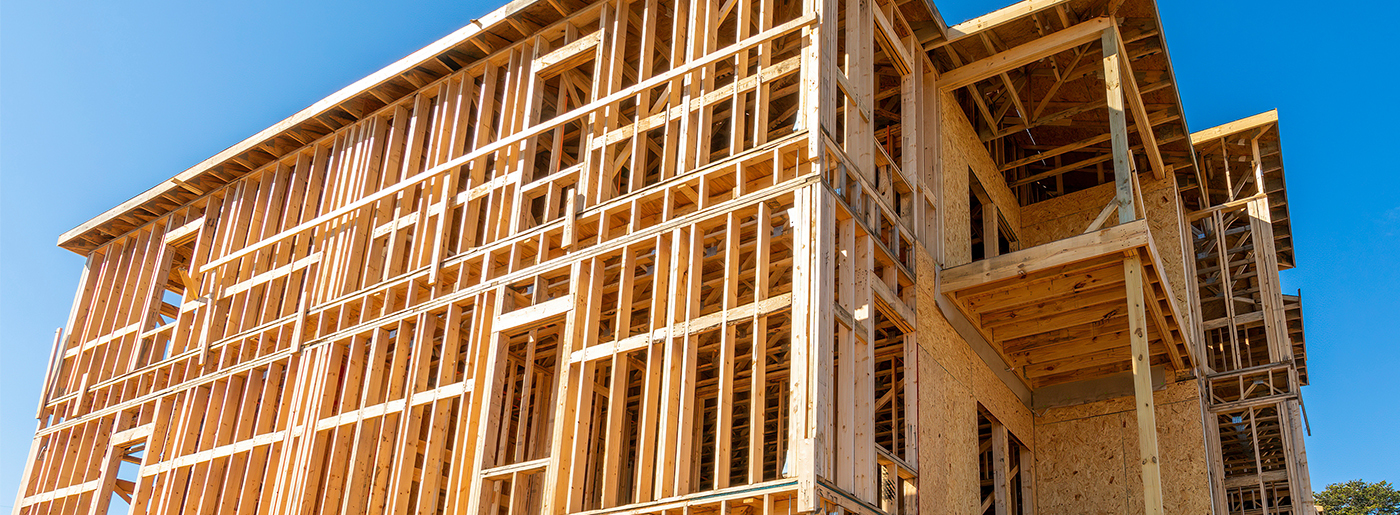“Acting as a carbon capture and storage device, timber is the perfect building material to help us fight against climate change”
With temperatures in the UK recently exceeding 40C for the first time ever, it is becoming increasingly difficult to deny the impact of climate change and global warming. That means, more than ever before, now is the time to start thinking about timber in construction.
Our reliance on concrete and steel to construct everything from houses to shopping centres has a high environmental cost. Concrete accounts for 4-8% of global carbon dioxide (CO2) emissions. It is the most frequently utilised substance on Earth, accounting for around 85% of all mining and contributing to an alarming depletion of the world’s sand. Every year, enough concrete is poured to cover the whole country of England.
As a result, some architects, tradesmen, and timber merchants are arguing for a return to wood as our principal building material. Timber from managed forestry actually absorbs CO2 from the atmosphere rather than emitting it. Depending on the species of tree harvested, a cubic metre of timber usually holds around one tonne of CO2 – roughly equivalent to 350 gallons of gasoline!
Not only does wood remove more CO2 from the environment than it adds during manufacturing, but it also doubles its contribution to CO2 reduction by replacing carbon-intensive materials like concrete or steel. Timber frame construction is used in 15% to 28% of new homes produced in the UK each year, saving approximately one million tonnes of CO2 every year. Increased usage of wood in construction might triple that amount.
There have recently been proposals for massive tree planting to trap CO2 and slow climate change. However, whereas young trees are efficient and effective carbon sinks, adult trees are not. The Earth has a balanced carbon cycle in which trees (along with all other plants and animals) grow utilising carbon, fall and die, and release that carbon back into the atmosphere. That equilibrium was thrown off when humans uncovered ancient carbon stocks in the form of coal and oil that had been trapped during prior carbon cycles and began burning them, releasing the ensuing CO2 into our atmosphere far quicker than the current cycle can handle.
Many pine trees in managed forests, such as the European spruce, take around 80 years to mature and are net carbon absorbers during that time – but once mature, they release nearly as much carbon as they absorb through the breakdown of needles and fallen branches. As in Austria in the 1990s, falling demand for paper and wood resulted in the closure of vast swaths of managed forests around the world. Rather than returning to their natural state, these monocrops blanket forest floors with toxic pine needles and dead branches. Because older trees are no longer being felled, Canada’s great forests, for example, have actually exhaled more carbon than they absorb since 2001.
Cutting down trees to restore our sustainable, managed forests and use the resulting wood as a building material is arguably the best form of carbon sequestration. Forest Stewardship Council (FSC)-certified managed forests typically plant two to three trees for every tree removed, implying that the greater the demand for wood, the greater the growth in both forest cover and CO2-hungry new trees.
If you’re looking for the perfect timber for an upcoming project, and want to make sure it comes from well-managed forests and is FSC certified, give Quercus a call on 0845 50 50 311. Our friendly team of experts are always happy to give customers the benefit of their experience by advising them on their timber choices.

